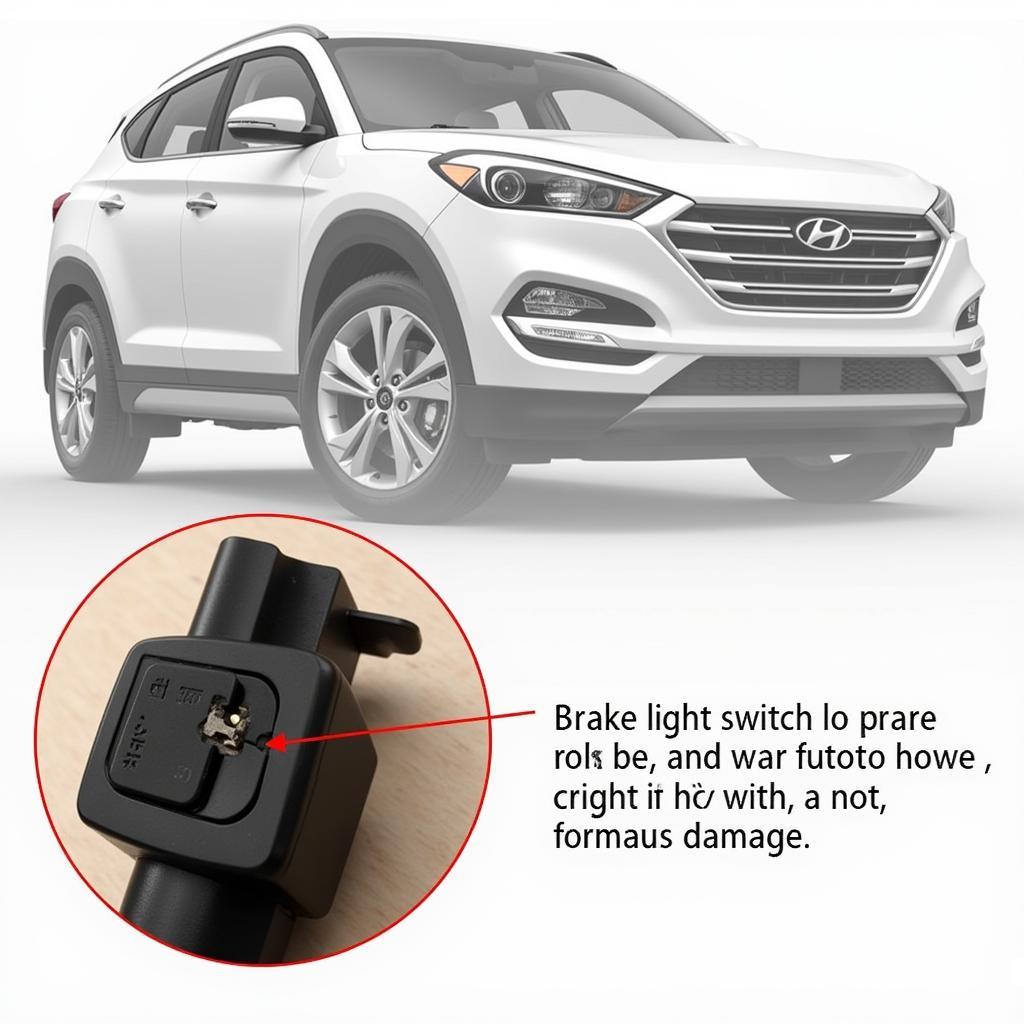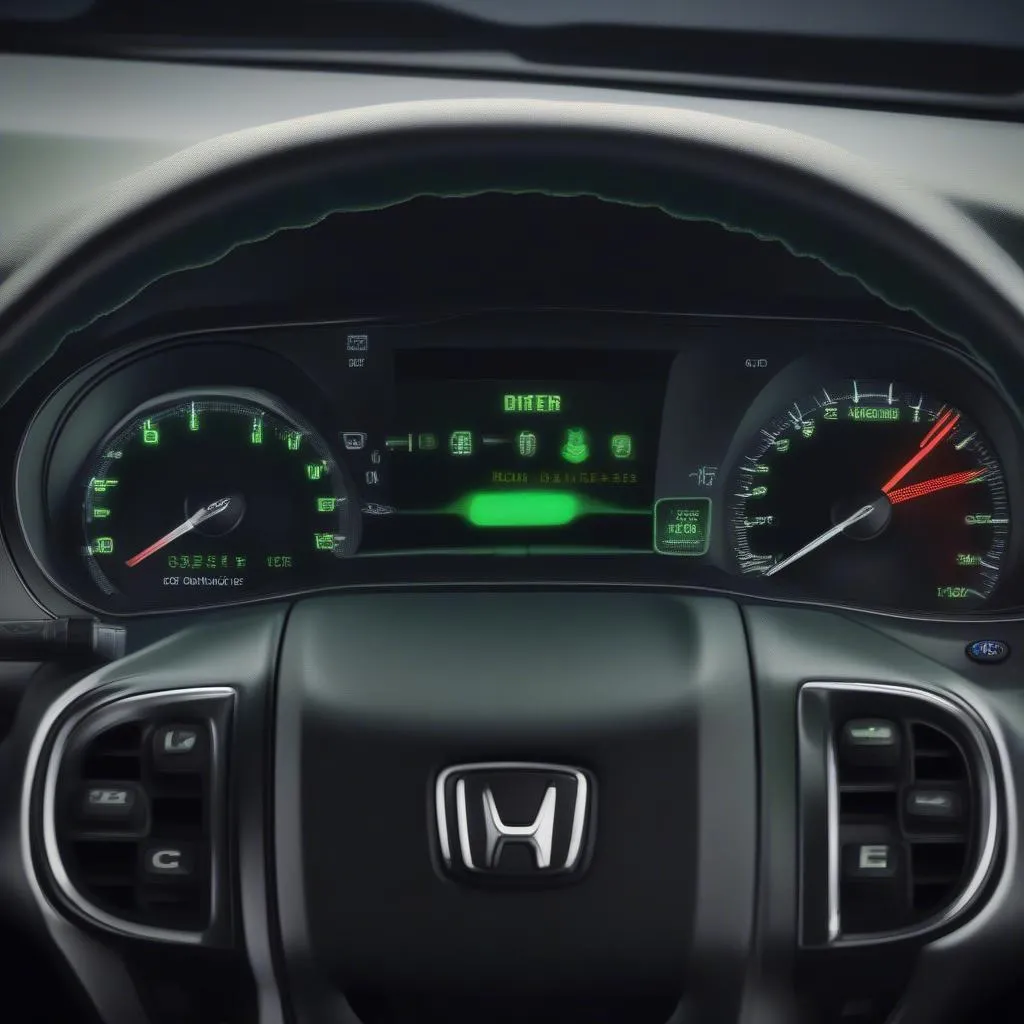The brake light warning on your 2017 Hyundai Tucson dashboard can be an annoying and potentially dangerous issue. Understanding the common causes of this warning light and knowing how to troubleshoot them can save you time, money, and even prevent an accident. This comprehensive guide will delve into the various reasons your brake light might be on, providing practical solutions and expert insights to help you get back on the road safely.
Common Causes of a 2017 Hyundai Tucson Brake Light Warning
Several factors can trigger the brake light warning on your Tucson. While some might be minor and easily fixable, others could indicate a more serious underlying issue requiring professional attention. Here are some of the most common culprits:
1. Burnt Out Brake Light Bulb
A burnt-out brake light bulb is the most common reason for the warning light to illuminate. Thankfully, this is also one of the easiest issues to fix.
How to check: Inspect all your brake lights, including the high-mounted brake light, for any signs of burning or damage.
Solution: If you find a burnt bulb, replace it with a new one of the same type. You can consult your owner’s manual or visit an auto parts store to find the correct bulb for your Tucson.
2. Faulty Brake Light Switch
The brake light switch, located near the brake pedal, activates your brake lights when you press the pedal. A faulty switch might not send the signal to illuminate the lights, triggering the warning light.
 Faulty brake light switch
Faulty brake light switch
How to check: While it requires some mechanical knowledge, you can try testing the switch’s continuity with a multimeter. However, it’s often best to consult a mechanic for accurate diagnosis.
Solution: If the switch is faulty, it needs to be replaced. This is a relatively inexpensive repair that a mechanic can easily perform.
3. Blown Fuse
Like any electrical system, your Tucson’s brake lights rely on fuses to protect the circuit from overloads. A blown fuse in the brake light circuit can disrupt the flow of electricity, causing the lights to malfunction.
How to check: Locate your Tucson’s fuse box (usually under the dashboard or hood) and consult the owner’s manual to identify the brake light fuse. Visually inspect the fuse for any signs of burning or breakage.
Solution: If the fuse is blown, replace it with a new one of the same amperage. However, if the new fuse blows again shortly after replacement, it could indicate a more serious electrical issue that needs professional attention.
4. Wiring Problems
Damaged or corroded wiring in the brake light circuit can also cause the warning light to come on. Exposure to moisture, road salt, or physical damage can compromise the wiring’s integrity, interrupting the electrical flow.
How to check: A visual inspection of the wiring harness leading to the brake lights can reveal any obvious signs of damage. However, diagnosing wiring issues often requires specialized tools and expertise.
Solution: Repairing or replacing damaged wiring is best left to a qualified mechanic. They have the necessary tools and knowledge to identify and fix the issue effectively and safely.
5. Faulty Trailer Wiring Harness (If Applicable)
If you frequently tow a trailer with your Tucson, a faulty trailer wiring harness could be the culprit. A short circuit or loose connection in the harness can disrupt the brake light signals.
How to check: Inspect the trailer wiring harness for any visible damage, loose connections, or corrosion.
Solution: Repair or replace any damaged components in the trailer wiring harness. Ensure that all connections are secure and free from corrosion.
What to Do When Your Brake Light Warning Appears
When your Tucson’s brake light warning appears, the first step is to pull over to a safe location as soon as possible.
-
Check Your Brake Lights: Inspect all brake lights, including the high-mounted one, for any signs of malfunction. If possible, ask someone to press the brake pedal while you observe the lights.
-
Consult Your Owner’s Manual: Your Tucson’s owner’s manual provides valuable information about the warning lights and recommended actions.
-
Seek Professional Help: If you can’t identify the issue yourself or are uncomfortable troubleshooting electrical components, it’s always best to consult a qualified mechanic.
“Ignoring a brake light warning can be dangerous. Even a seemingly minor issue like a burnt-out bulb can affect your visibility to other drivers, increasing the risk of accidents,” advises John Miller, a senior automotive electrician with 15 years of experience. “It’s crucial to address the problem promptly to ensure your safety and the safety of others on the road.”
Preventing Future Brake Light Problems
While some brake light issues are unavoidable, you can minimize the risk of future problems by:
- Regularly Inspecting Your Brake Lights: Make it a habit to check your brake lights periodically, especially before long trips. Look for any dimming, flickering, or complete outages.
- Addressing Issues Promptly: Don’t ignore any warning lights or signs of brake light problems. Addressing issues early can prevent them from escalating into more significant and costly repairs.
- Using High-Quality Replacement Parts: When replacing bulbs, fuses, or other components, always opt for high-quality parts that meet the specifications outlined in your owner’s manual.
- Keeping Your Vehicle Maintained: Regular maintenance, including brake inspections, can help identify and address potential issues before they become major problems.
Conclusion
The brake light warning on your 2017 Hyundai Tucson should never be ignored. By understanding the common causes and following the troubleshooting steps outlined in this guide, you can effectively address the issue and ensure your safety on the road. However, always remember that if you are unsure about any aspect of the repair or diagnosis, seeking professional help from a qualified mechanic is always the safest and most reliable course of action.


